Despite its age, Doctors House remains the most impressive residential building in Liuli. Construction began in 1922 when the hospital was established.
Originally intended as a residence for the doctors working in Liuli, the house featured only a living room and a bedroom, lacking a kitchen, toilet, or bathroom for over 50 years. Initially, both local and European doctors were accommodated in Doctors House but since 2000, it has served as a guest house, primarily for students, volunteers, and interns placed in Liuli through our association.
In 1972, a doctor from the Netherlands moved into the house with his family and made the first additions, including a second bedroom, kitchen, and bathroom. The house was connected to the water tank built in Liuli in 1965. In 1991, a surgeon from Germany who worked there for three years purchased the house's first petrol-powered refrigerator, which served for over a decade. An electric refrigerator was installed for the first time in 2013, but severe voltage fluctuations caused it to fail after about two years. Currently, there is no refrigerator in the house. In 2011, Doctors House was connected to the hospital's solar grid, which has since been expanded. The kitchen includes a sink, various cabinets, and a countertop. Cooking is done outside on an open fire by the housekeeper, Monika, who prepares three meals a day for the residents of Doctors House . Monika also handles laundry and cleaning.
A medical student wrote about Doctor's House in his travel blog in 2023:
„"When we're in Doctor's House and not sleeping, the terrace is actually where most of the activity happens. The four armchairs look quite comfortable, but after about ten minutes, you painfully realize how saggy the cushions are, offering the unforgettable experience of feeling the seat slats directly with your backside. For Doctor's House enthusiasts: if no one else is around, add three cushions to the seat! Otherwise, people like to eat here, write blogs, play cards, and the like. The only thing you can't do here is make phone calls, as the internet tends to be very poor. Regarding food: Fruit peels and other compostable leftovers are easily disposed of here and are simply thrown into the forest a few meters from the terrace. It sounds strange at first, but consider the alternative: collecting it on a plate or in a bowl and bringing it to the kitchen for Monika. She then washes the plates and carries the leftovers outside, a few meters in front of the terrace, and dumps them into the forest. So, not only can you make Monika's work easier by using the first method, but you can also improve your skills in 'melon bowl discus throwing.' Very amusing! For Doctor's House enthusiasts: simply leave small bits of food, such as sauce and grains of rice, on the table, and after a few minutes, a swarm of ants will come and drag away whole grains of rice."
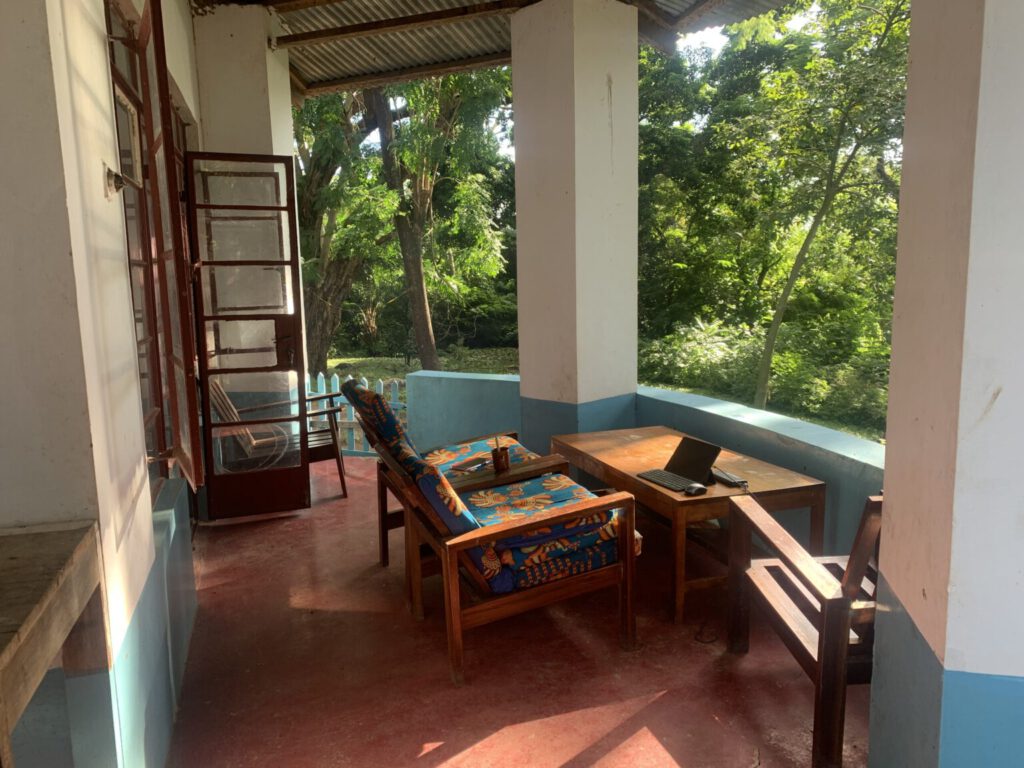

Incidentally, windows are very rare in this region. Here, too, windows are usually secured with bars, and we even have fine-mesh bars in front of them! This means that rain rarely enters, and both human and animal intruders are kept from trespassing.
The View: Lake Malawi (also known as Lake Nyasa) is clearly visible through the gaps in the trees. It glistens beautifully, especially when the sun is shining, and the sunset is stunning to watch, particularly from the beach. Additionally, you can see all kinds of animals here, especially street dogs, which are fully dewormed but have unpleasant ulcers on their faces, and of course, monkeys. According to the internet, these are probably vervet monkeys. At least according to the locals, there are two groups of monkeys, both of the same species but from different troops. Frequent fights between the troops are common, so the sounds of fighting monkeys are not unusual. When not fighting, the monkeys spend their time jumping around in the trees, on the roof of Doctor's House, and on the hospital roofs. For Doctor's House Enthusiasts: If you are on the terrace, be sure to close the small gates; otherwise, fighting monkeys may come and throw glass bottles on the floor.„
The dining room, or main room, is rarely used as a dining area. Instead, it’s mainly used to place food, store groceries, keep items needed for daily hospital operations, and charge cell phones or power banks—at least as long as the electricity is working. During the day, the power is off more often than it is on, so you need to be prepared for that. At night, the power is quite reliable, but if it does go out, we are connected to the hospital's generator, and the lights are back on within 20 minutes at most. FFor Doctor's House Enthusiasts: Charge your cell phone and power bank whenever possible! You never know when and how long the power will be out.
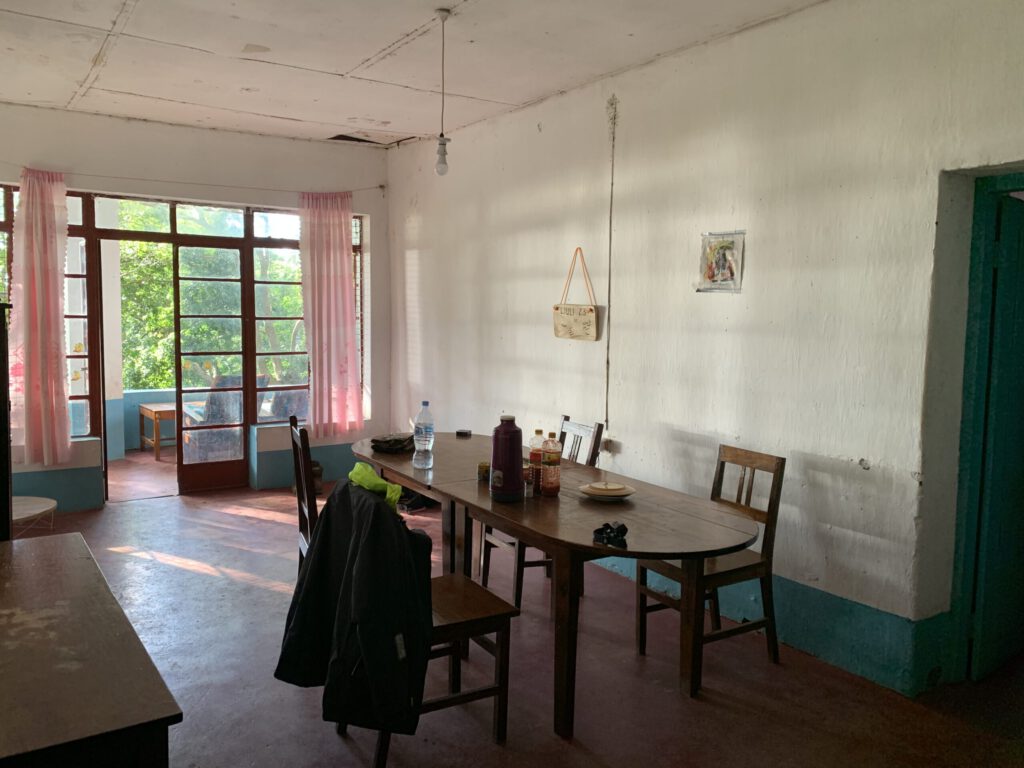
Bedroom 1
If you turn left in the dining room, you come to Bedroom 1. This bedroom has a double bed and a single bed. It is probably the warmest room in the whole house, so in the very unlikely event that you get cold, you will always find enough warmth here. There is also a door in this room leading to another room. However, there is no key, and nobody really knows what's inside, so it's best to leave it closed to prevent Kerberos from jumping out at you. There are also two power outlets in this room! Naturally, it makes sense to use the house fan here. The problem is that the fan only has a Type G plug, so you won't get very far without an adapter. Incidentally, the third door in this room leads to the bathroom. For Doctor's House Enthusiasts: Bring adapters for both Type F to G and Type G to F.

Bathroom
The bathroom has a European toilet (yay!), a washbasin, and a shower. Even though the toilet only flushes 50% of the time and is incredibly slow to refill, at least it's a European flush toilet—a real luxury here! Speaking of luxury: toilet paper is only available individually packaged and is considered a true luxury. There is also rarely any water at the washbasin. When there is water, the tap could easily be diagnosed with prostate hyperplasia, but every now and then it works well, providing good water. However, in those cases, it's only hot water, as the only supply line comes from the solar water heater on the roof. In comparison, our shower always has water, but only cold water—just as cold as it stays in a black plastic tank on the roof. There is also a second valve, but it’s more broken than anything else, and when you turn it on, the water flow resembles that of an enlarged prostate. But anyway, we're happy if we can shower at all. There are also two standard brass taps in the shower. Cold water always comes out of the one on the right reliably, and water also comes out of the one on the left. However, where it comes from and whether it should be hot or cold is rather arbitrary. All the other valves in the wall? No idea. Incidentally, it also happens occasionally that there is no water at all. This always happens when our tank on the roof is empty and Monika has forgotten to open the pipe to refill it. It has never happened to me before, standing in the shower completely soaped up. The second door leads to a passageway. For Doctor's House Enthusiasts: At least take a cell phone or a flashlight with you to the shower. If the light goes out while you're showering, you'll be without light and likely to end up lying in front of the shower for a long time.
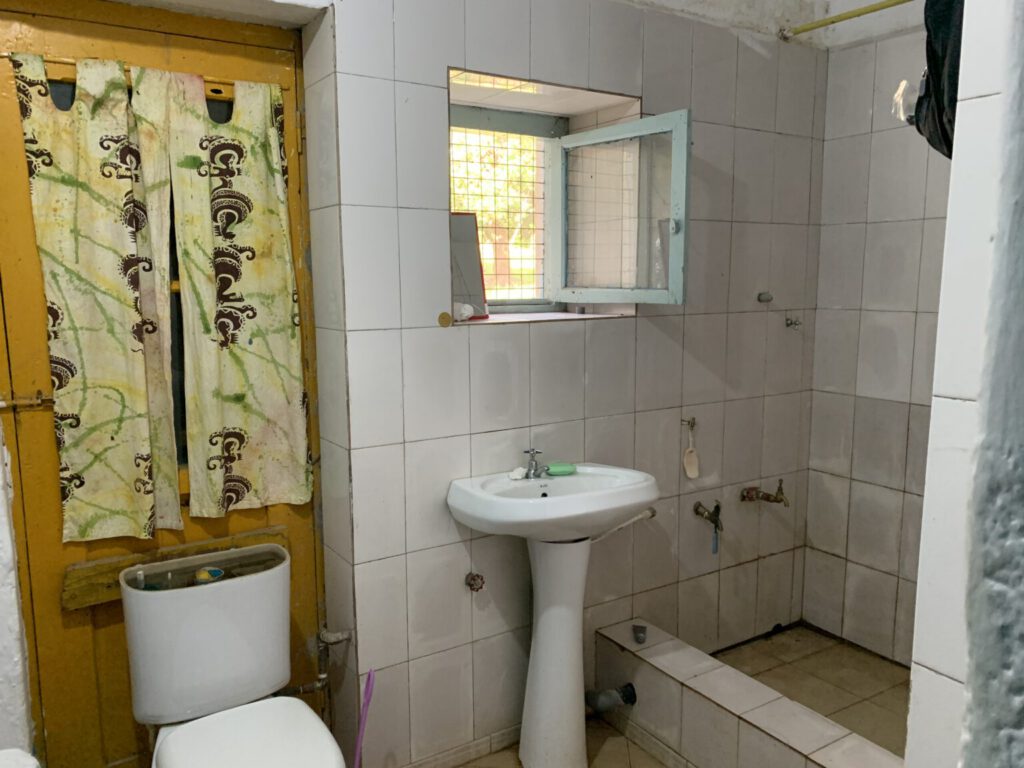
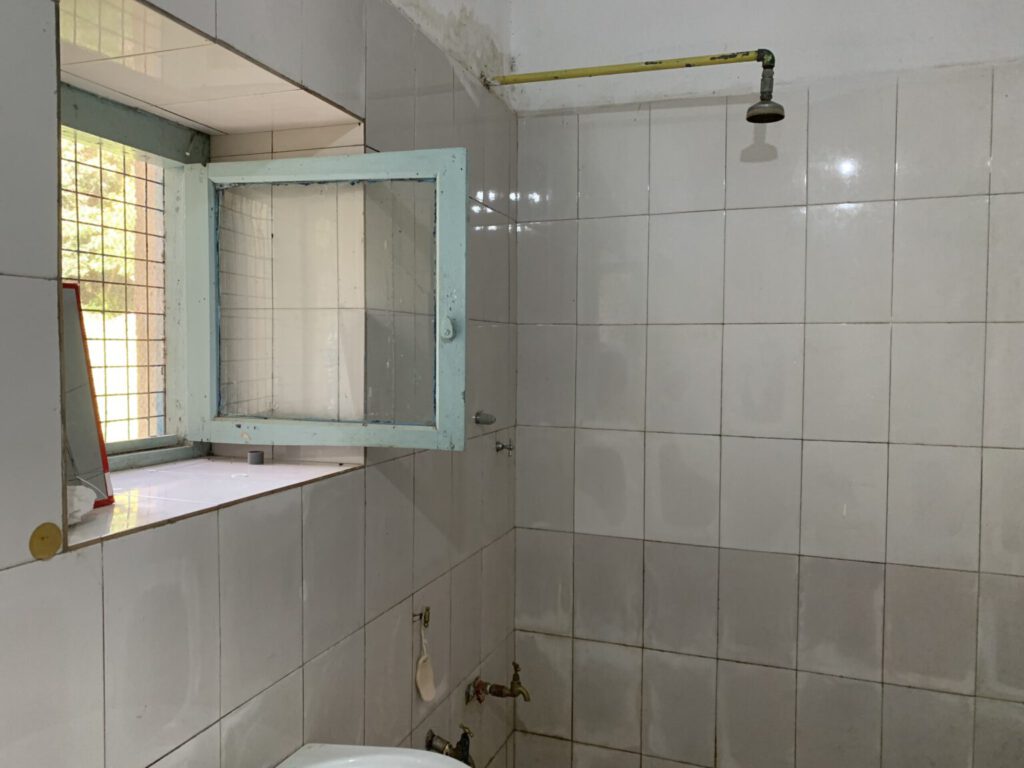
Passageway / Bedroom 2
This room, which I can affectionately call "my bedroom," has a narrow bed with two incredibly worn mattresses and a closet. Like the rest of the house, a few geckos live in this closet, and every now and then one runs towards you when you open the door. You also have to scrape gecko droppings off your clothes about once a week. But you get used to everything. It's a bit annoying that there’s no power outlet in this room, but it's not so bad. After all, this bedroom is much cooler than the first one. From here, you can turn right back into the dining room or continue straight ahead to find the third and final bedroom For Doctor's House Enthusiasts: Pack things you don’t want to get dirty in a bag, such as a cloth bag!
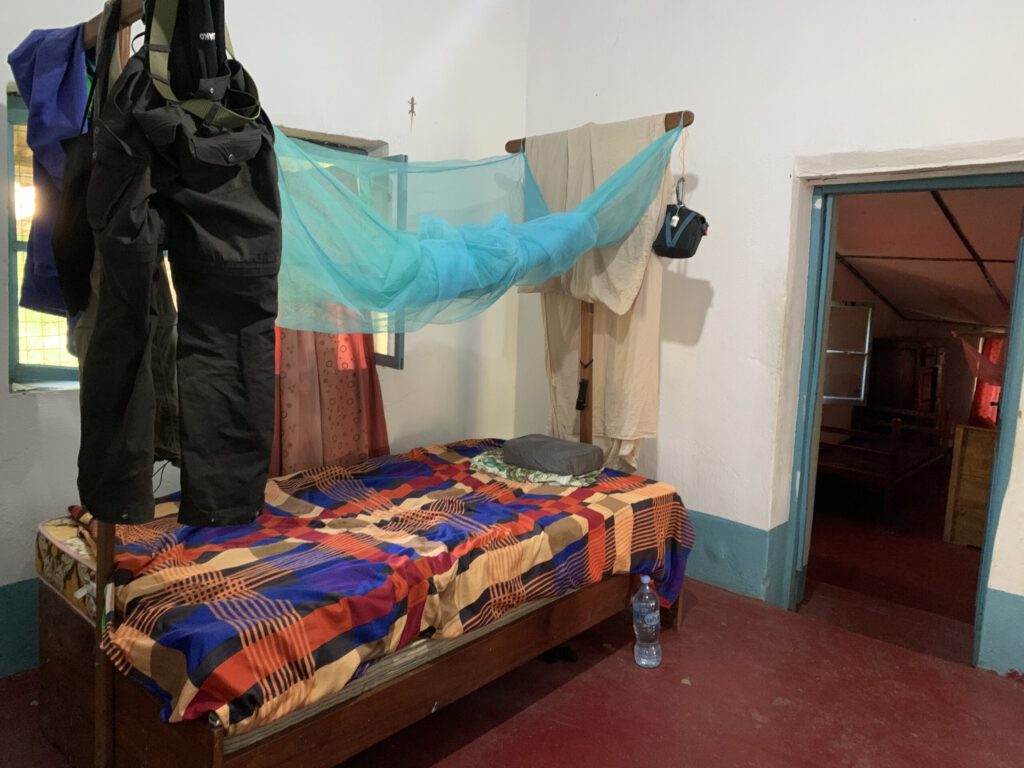
Bedroom 3
When you open the door in the dark and enter, you have to be careful not to fall down the stairs. Once you’ve mastered the stairs, you’ll find the second largest bedroom. By the way, have I mentioned that the stairs here are not standardized? Relying on your muscle memory when climbing the stairs is a bad idea and would normally result in ending up in the non-existent shock room with a "condition after falling downstairs." So watch your step!In this room, in addition to the currently non-functioning ceiling light, there is another power outlet, a wide bed, and a narrow bed. The narrow bed doesn't have a mattress, but perhaps you could use the spare one from my bed. There is also a wardrobe and a few shelves. Right next door is the kitchen, which was apparently added at the same time. When they added it, they likely thought about ventilation or something similar, as part of the wall is made of raised grass pavers. As a result, you can really hear everything Monika does in the kitchen. For Doctor's House Enthusiasts: I was told that sleeping with earplugs (Oropax) is highly recommended, especially if you are a light sleeper. You can hear everything through the walls.
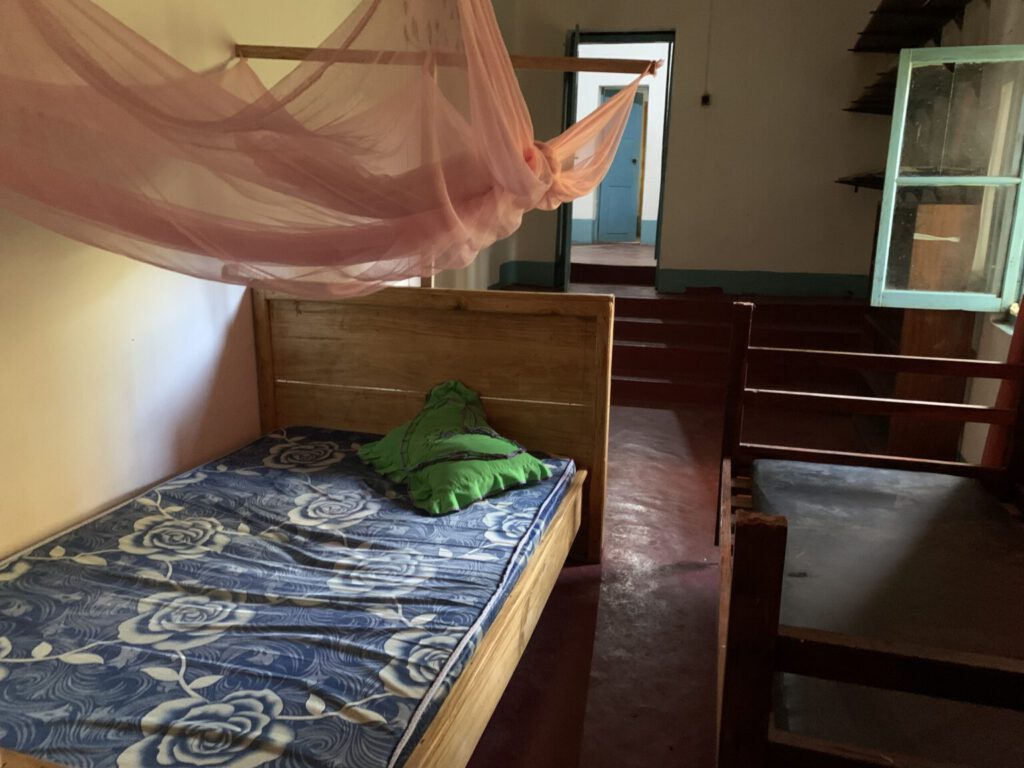
Culinary Delights
As food plays an important role, I would like to go into more detail here.
There are three different options for breakfast, of which I unfortunately don't have any pictures. The best is probably the bread—not bread as we know it from home, but rather small white rolls, all very soft, with a consistency more reminiscent of toast. These are the rarest. The second option is the least appealing: small rice balls, apparently deep-fried or baked, I don't know, but they are really greasy and tend to taste bad. The most common are small dough balls, similar in size and shape to quark balls, with dough more like doughnuts and a very greasy, unsweetened taste. For Doctor's House Enthusiasts: Bring a jar of Nutella, Ovomaltine, jam, or something else. This will even make the rice balls edible.
At both lunch and dinner, there’s something warm to eat. The main dishes, listed in descending order of tastiness, include Chipsy (essentially homemade fries), chapati, incredibly soft overcooked spaghetti, plantains, potatoes, pumpkin, cassava, slimy vegetables (no idea what these are—perhaps cassava in sauce), white vegetables with pink stripes (no clue what these are), and far back, “the Pink One” (locally called “Yum-Potato,” even though it’s definitely not potatoes). As side dishes, again in descending order of tastiness, there’s tomato sauce (caution! Sometimes incredibly spicy, sometimes bland), typhoid salad (essentially tomato salad, but Monika was actually forbidden to make this salad because too many visitors contracted typhoid; still, it’s delicious), beans, and “spinach” (I’m sure it’s not spinach, but we called it that anyway—it’s quite tasty but unfortunately gives me severe diarrhea). A bit out of the ordinary is Ugali, a cassava porridge, but it’s only available when “Gift” comes to visit and is generally categorized towards the back of the menu. Additionally, there’s occasionally fish (for others) and omelet (for me). For Doctor's House Enthusiasts: Bring your own spices! Besides (a little) salt and fire seasoning, the food here usually has none. The tomato and pilipili sauce from the village is also recommended.
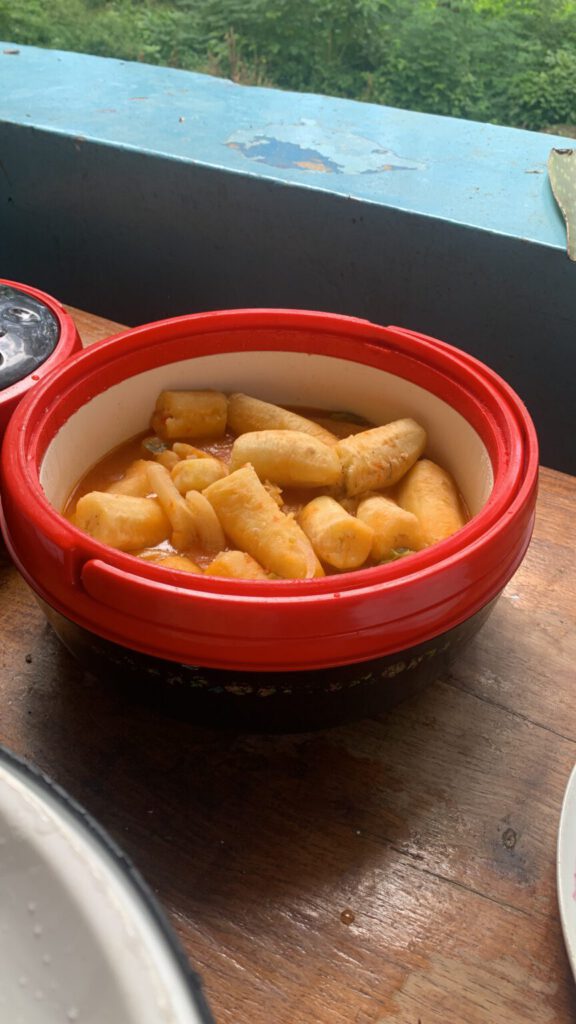
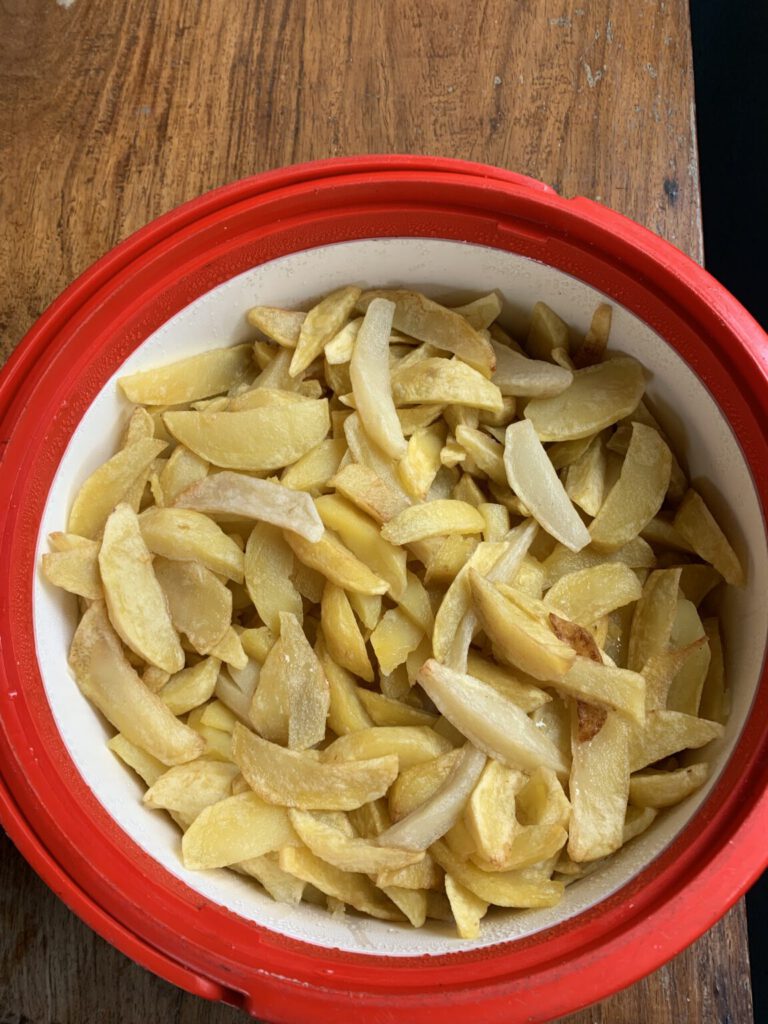
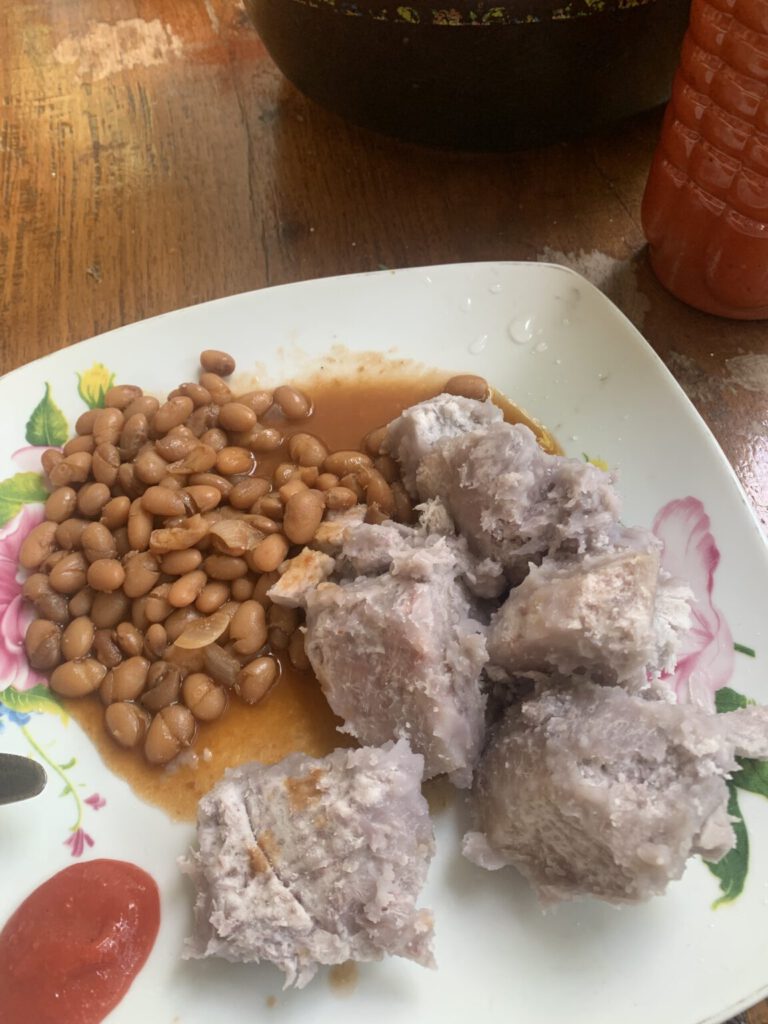
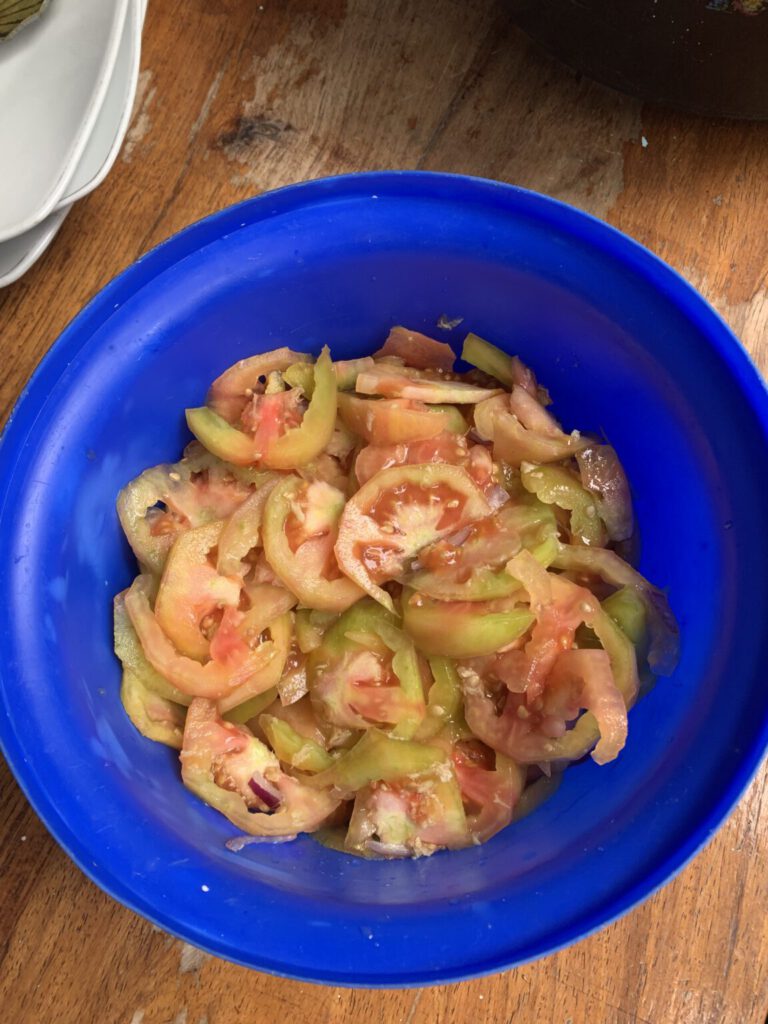
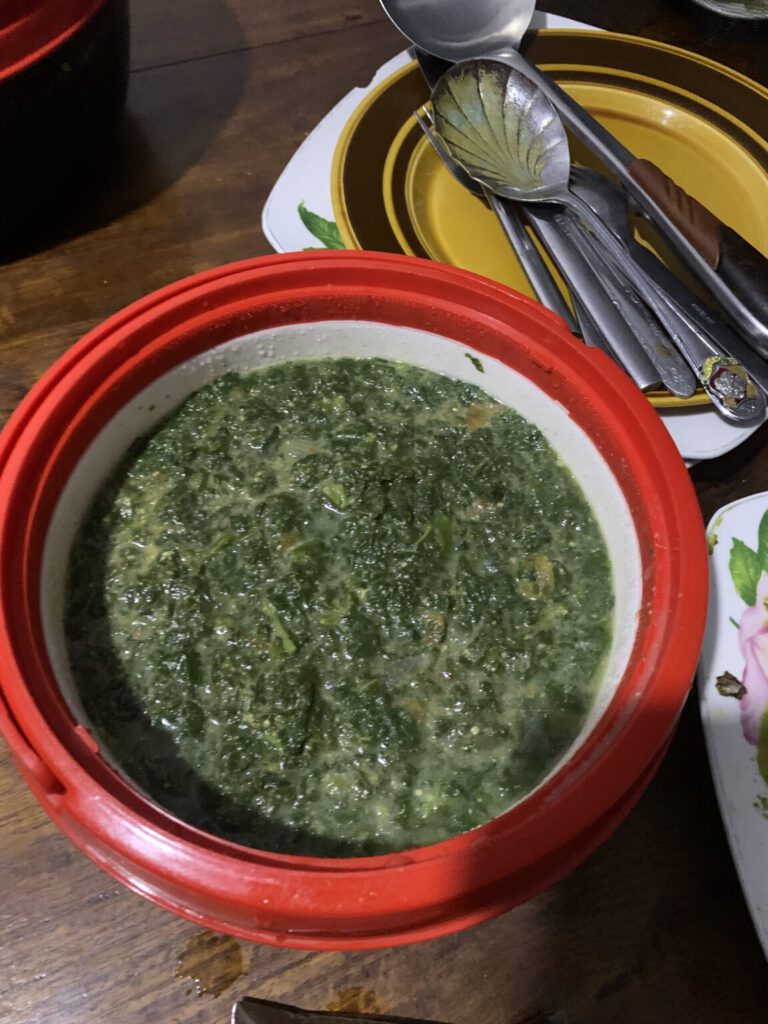
Copyright by Niklas Fraunholz.
